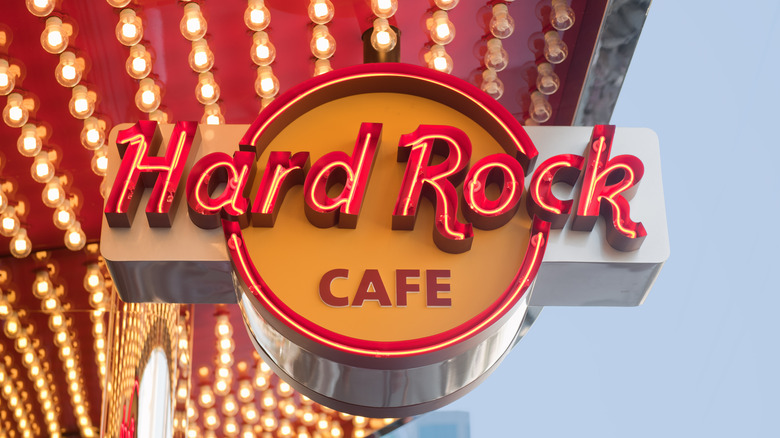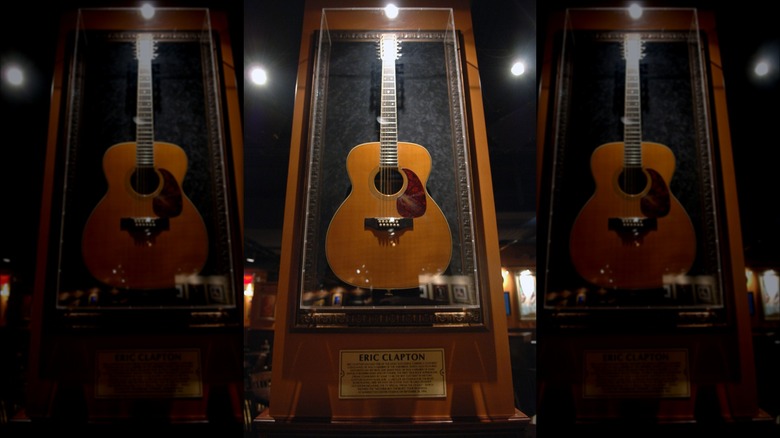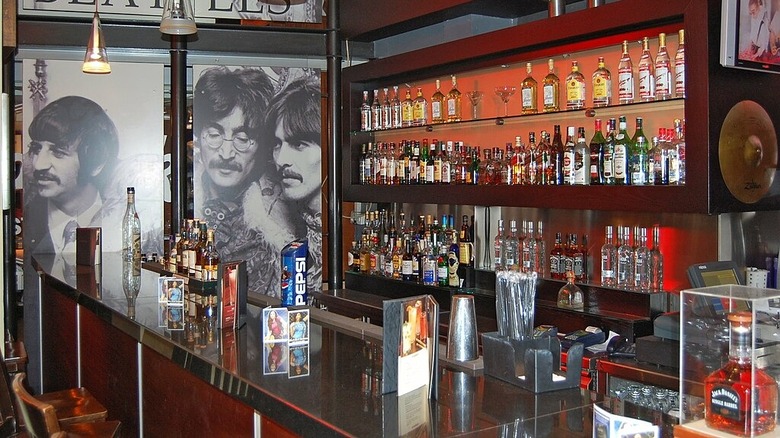The First Hard Rock Cafe Began In An Old Car Dealership
It's difficult to imagine now, but the owners of the London location where two American entrepreneurs opened the first Hard Rock Cafe were so sure the enterprise would fail they refused to grant them anything longer than a six-month lease. The site was a former Rolls-Royce dealership in London's Mayfair neighborhood. Surrounded by posh eateries and high-end boutiques, a burger joint was a bit out of place, but it was soon a hit with the locals. It added a side of rock and roll along the way, and its popularity has continued 50-plus years on.
Peter Morton and Isaac Tigrett, a pair of 22-year-olds from wealthy U.S. families, were living in London in the early '70s when they realized an American staple (the good, old-fashioned hamburger on a bun) wasn't even on the radar for most Brits. With financing from their families, the two set out to change that sad state of affairs. In 1971, when the original Hard Rock Cafe welcomed its first patrons, London was just coming out of the Swinging Sixties, a time when fashion and music ruled the landscape. Think Twiggy, mini-skirts, and go-go boots. The Beatles, The Kinks, and The Animals. Think Austin Powers. Get the picture? It was groovy, baby.
Memorabilia wasn't part of the original plan
With music still at the forefront of trend-setting chic, Morton and Tigrett leaned into the theme. The name Hard Rock Cafe is a subtle nod to the cover art on the back side of The Doors' Morrison Hotel album and the duo recruited Alan Aldridge — a well-known artist who designed album covers for The Beatles and Elton John, among others — to create the iconic Hard Rock Cafe logo. But the eclectic collection of museum-quality memorabilia so indelibly linked to the brand came later. In fact, it was nothing more than a happy coincidence.
"Eric Clapton, a regular of the Hard Rock Cafe London, asked to mark his favorite spot at the bar by hanging one of his guitars on the wall," Chase McCue, director of memorabilia for Hard Rock International, told Forbes in 2021. "After the Clapton donation, Hard Rock's founders received a package that contained a black Gibson Les Paul and a note that read 'Mine's as good as his. Love, Pete' from Pete Townshend." That's the official story, anyway. By some accounts, Clapton's donation was less about altruism and more about claiming his favorite seat at the London bar. As the Hard Rock Cafe's reputation grew, he found himself vying with patrons — including George Harrison — for what must have been a premium perch. And Townshend's response? Speculation is The Who's guitarist just didn't want to be upstaged.
The legend lives on
Morton and Tigrett had a good run until differences in their business approach took a toll. They expanded into Toronto in 1978, but not long after, feuds between the two frequently broke out. In 1982, 11 years after opening the first location, they agreed to go their separate ways, dividing the brand into two global entities. Morton got the rights to use the Hard Rock name for business enterprises west of the Mississippi River. Tigrett became lord of all things Hard Rock for all ventures east of it. After that, things got even messier, playing out like a corporate soap opera with myriad twists, turns, mergers, and acquisitions. In 1982, Morton opened the first U.S. Hard Rock Cafe in Los Angeles. Tigrett followed suit with the opening of Hard Rock Cafe New York in 1984. The former partners continued to one-up one another, opening Hard Rock Cafes across the U.S. and around the world into the late 1980s when Tigrett sold his portion of the company. Morton divested himself from the empire in 1996.
The following year, the new owners partnered with VH-1 to host a weekly music-focused series, "Hard Rock Live!," ushering in a whole new era of expansion until the Seminole Tribe of Florida, which still owns and operates the enterprise, purchased the company for $965 million in 2006. Today, Hard Rock International has a global presence encompassing cafés, casinos, and hotels in 76 countries around the world.


